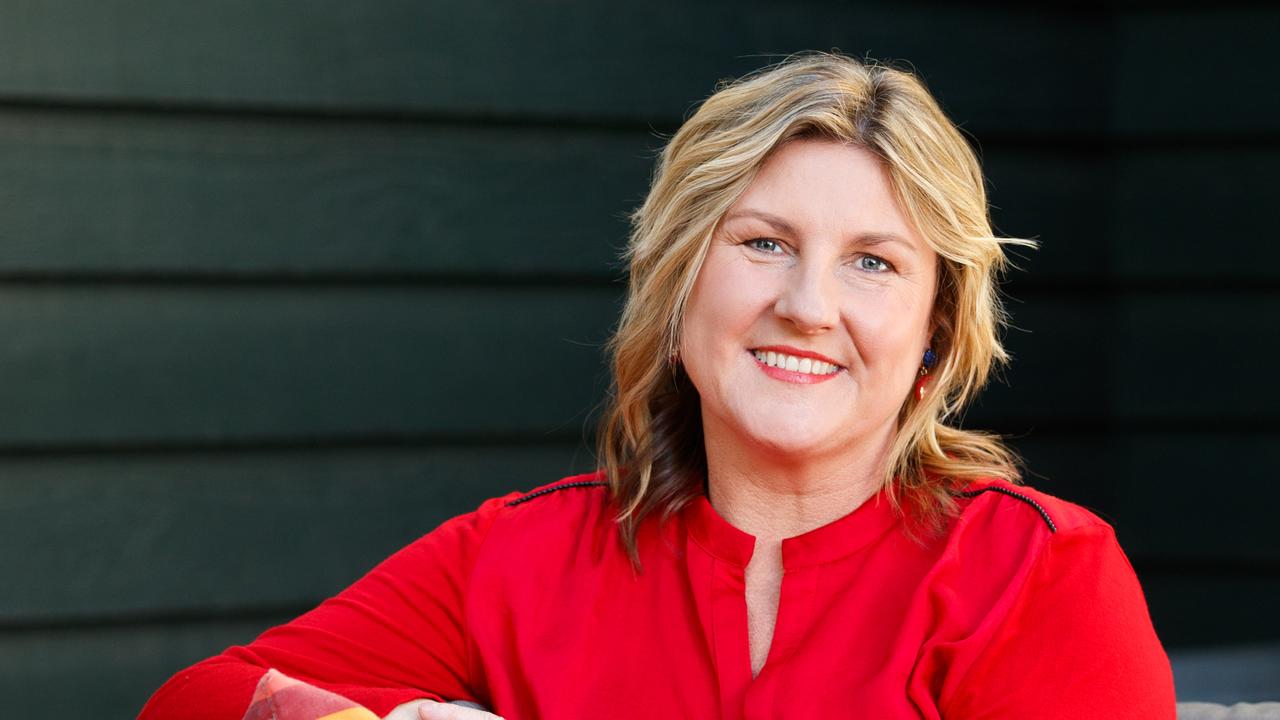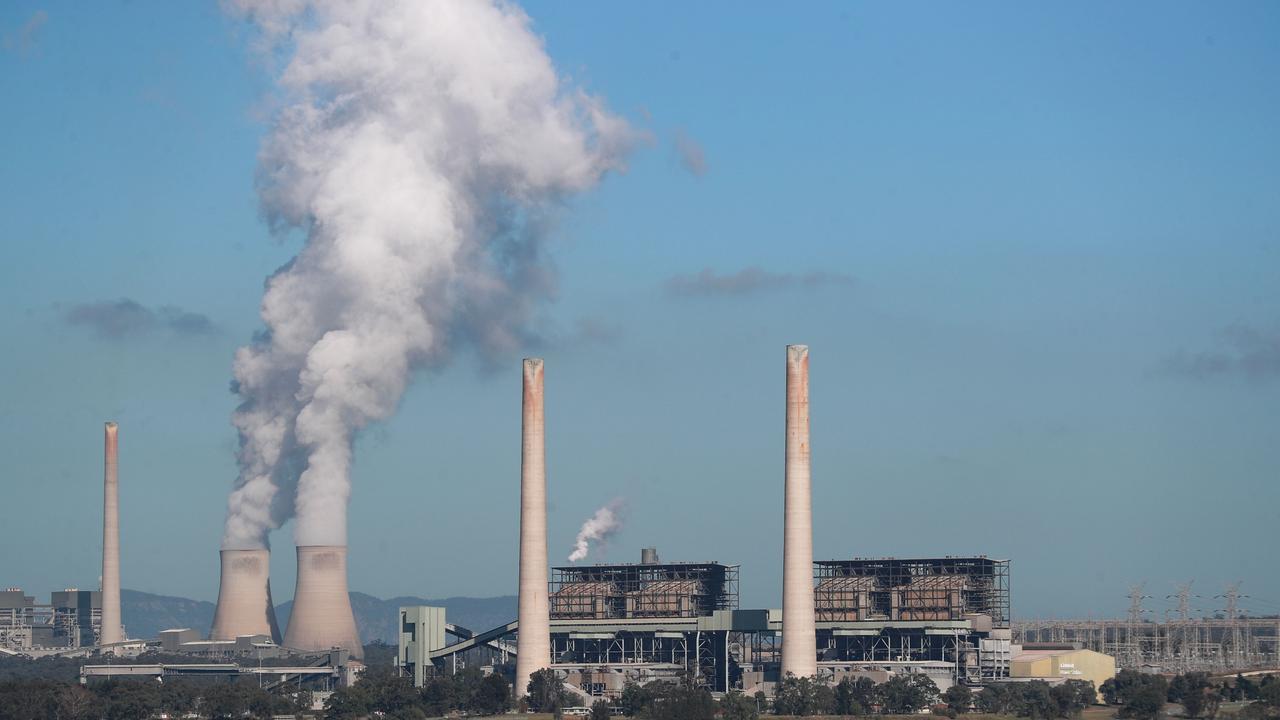Farming neighbours on the front line of wind farms raise alarm over community conflict
Farmers are warning rural communities are being torn apart by the march of wind turbines across Australia’s paddocks.
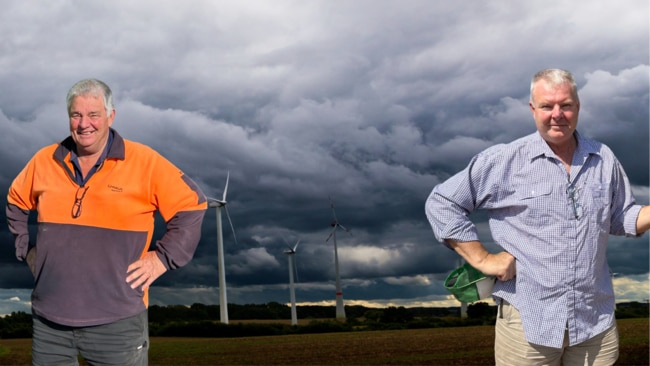
Business
Don't miss out on the headlines from Business. Followed categories will be added to My News.
Victorian grain grower Ross Johns says his community is being torn apart by wind farm developers relying on government subsidies and approval waivers to make their projects viable.
On the other side of the fence, Craig Henderson sees the economic sense in having wind turbines on his paddocks, a way to help his family’s farming enterprise survive in droughts and other tough times.
The near neighbours are on the frontline of a battle over farmland access that is turning ugly in rural communities.
Farmers are being tempted by the promise of about $40,000-a-year for every wind turbine on their paddocks, although that figure is disputed by some of those who have signed deals subject to confidentiality agreements.
Mr Ross said the business model was flimsy and propped up by taxpayers subsiding each wind turbine to the tune of more than $850,000 through various government grants and subsidies.
Mr Henderson sees the business case as solid as the thousand-plus tonnes of concrete that go into the foundation of a towering wind turbine.
Both men are concerned about escalating conflict and fears it could turn violent. Mr Johns called for greater transparency from wind farm developers after 200 people packed out a meeting at the Warracknabeal Community Centre organised by the Wimmera Mallee Environmental and Agricultural Protection Association (WMEAPA).
WestWind Energy, backed by oil and gas giant Shell, and Andrew Forrest’s Squadron Energy are among the wind farm players in a region designated as one of Victoria’s renewable energy zones.
“What we’re asking for is transparent, proper process from government and open community consultation by the multinationals and others backing wind farms,” said Mr Ross, whose family started farming in Victoria in the 1870s.
“There’s a huge amount of community angst. There’s been property damage between neighbours who don’t want it (wind farming) and hosts who want it.
“People have been run off the road. There’s been some people spotlighting neighbours out in the paddocks. It’s horrendously divisive. I’m concerned there’s going to be some disastrous things happen.
“There’s people who want the money because they’ve either got high debt load or succession issues, compared to people who are neighbours to the projects who are thinking about the intergenerational families and connections and the long-term nature of rural Victoria. It’s divided right down the middle.”
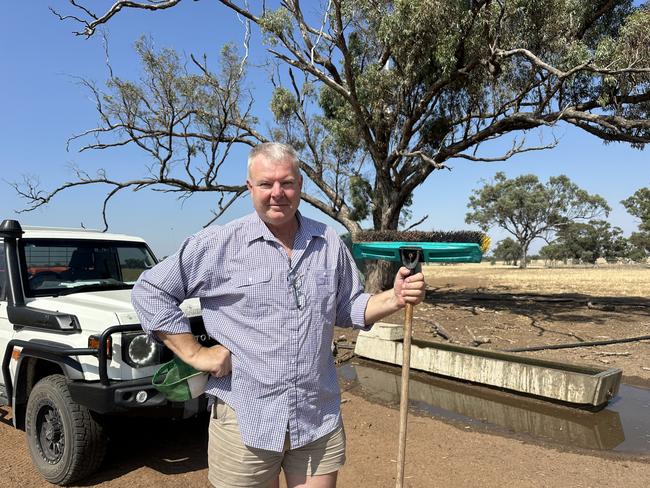
In Queensland, the Crisafulli government has moved to tighten controls on wind farm developments. New rules came into effect on February 3 making developers subject to mandatory assessments that give rural communities a much bigger say and mirror some of the approvals required for mining projects.
“It’s only fair that communities are properly consulted with for any new renewable energy developments in their own backyard, like many suburban communities are afforded when it comes to high-rise residential development in their neighbourhood,” Queensland Deputy Premier Jarrod Bleijie said.
Association of Mining and Exploration Companies acting Queensland director Kate Dickson said the new rules were a first for Australia, and overdue.
“For too long, the exploration and mining industry has faced tougher environmental and approval standards than their counterparts in the renewable space,“ she said.
Mr Ross, who is president of WMEAPA, said Victoria had gone the other way and removed checks and balances.
“There’s been wind developers coming in and signing up people left, right and centre for big bucks for renewables. My concern about renewables is the highly subsidised nature of the industry because it’s not commercially viable independent of that,” he said.
“If it’s not market-driven, eventually there’s going to be an absolute disaster like the floor price scheme in wool or the car industry in Australia.”
Mr Ross said most farmers in the Wimmera and elsewhere in the state were opposed to the building of transmission lines through agricultural land to connect wind farms to Melbourne.
“There’s huge community angst around the transmission lines and there are massive issues around the withdrawal of the right of individuals to appeal to VCAT (Victorian Civil and Administrative Tribunal),” he said.
Farmers lost that right as the Victorian government moved to accelerate billions of dollars in wind farm investment, including at the Warracknabeal Energy Park covering about 25,000 hectares of land mostly used to grow crops like wheat and barley.
Mr Ross and Mr Henderson are mates but have agreed to disagree on wind farms.
Mr Henderson was booed by some of the crowd when he stood up to make his case at the recent Warracknabeal meeting. He is the president of the Victorian Farmers Federation grains council but was speaking in his capacity as a local farmer.
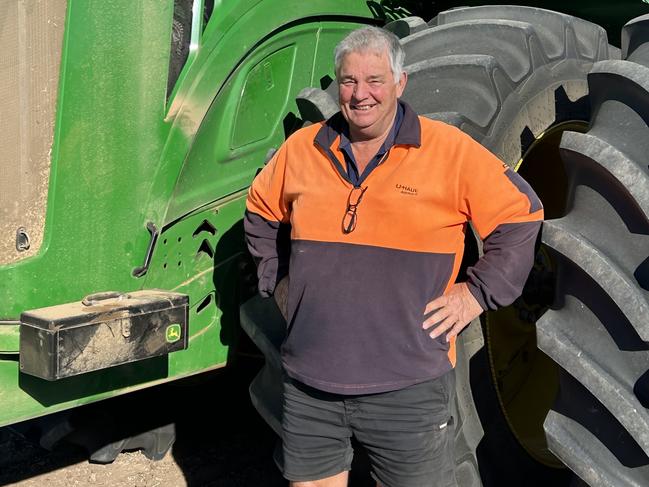
Mr Henderson approached wind farm developers after they stopped just short of his property when first knocking on doors in the region.
“To me, it was a viable option for our farm to risk-mitigate against drought and I was keen to do that. In the past we put in place mitigation of our property by building a free-range chicken farm and investing off-farm to make sure that we were sustainable in tough times,” he said.
“And that was our capital and our work. Here we had an opportunity to do the same thing without our capital and without our work, and with a measured degree of inconvenience on our farm.”
In negotiations with wind farm developers, Mr Henderson insisted any turbines were positioned so the family could continue to grow crops and run big farm machinery.
Although $40,000-a-year is bandied around the Wimmera as the going annual fee per turbine, Mr Henderson said it was not that simple, with rates based on the megawatt size.
“That’s the figure everybody’s using. It’s not that much and it’s based on the megawatt size of the turbine. But in two years’ time if they build and there’s a 10-megawatt generator, it could be more.
“That’s highly unlikely and we don’t really know the size at the moment but they’re getting bigger all the time.”
Mr Henderson he was aware of community conflict over wind turbines and transmission lines through farmland. He called for cool heads from those opposed to farmers like him opting to tap into a fresh income stream.
“The spin-off of this is the government wants it. The last election was the place to voice your opinion because they’re the people making these decisions. It isn’t a farmer in the Wimmera making that decision. All they’re doing is making a decision on whether it is commercially viable or not for their enterprise,” he said.
Mr Henderson said it couldn’t just be “not in my paddock scenario” when it came to transmission lines and other infrastructure.
“Any time you turn a light on in this area, power has come through someone’s paddock. If we were to use the same philosophy that some of these people are adopting right now, we wouldn’t even be here. We wouldn’t have roads, we wouldn’t have water, telecommunications. We’d have nothing.”
More Coverage
Originally published as Farming neighbours on the front line of wind farms raise alarm over community conflict




